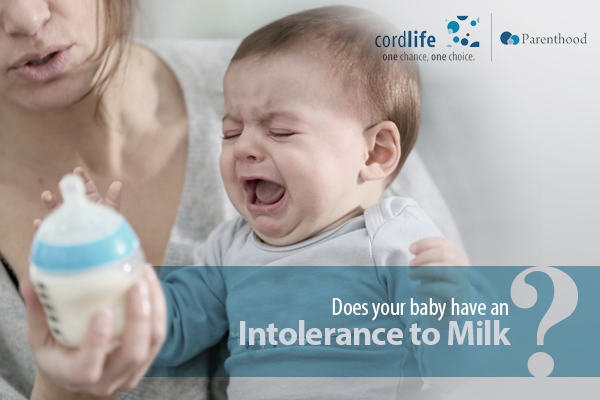Table of Contents
When you think of food for your baby, your mind first goes to milk. However, babies sometimes react to cow’s milk or formula, which could either be lactose intolerance or a milk allergy. In these cases, you’d need to avoid milk or reduce how much milk your baby consumes. While your baby may grow out of this intolerance, it’s important to know how to manage it.
Milk Allergy vs Lactose Intolerance: What’s The Difference?
If your child doesn’t have the enzyme that’s required to digest lactose (sugar in milk) in their digestive system, they will be lactose intolerant. This happens to about 1 in 10 children.
On the other hand, if your baby breaks out in a skin rash or swelling when they have milk, it’s an immune system problem called a milk allergy. When compared to lactose intolerance, a milk allergy is far more common in children under 5.
With tests, your doctor will be able to ascertain whether your baby is lactose intolerant or has a milk allergy.
Now that you know the difference let’s learn about each one.
Lactose Intolerance
Look out for these symptoms:
- Stools that are liquid and frothy
- Stomach aches
- Irritability
- Bloating and passing gas
- Nappy rash
- Now gaining weight
These symptoms are not unique to lactose intolerance, so you will need to visit your doctor for a medical assessment.
Treating lactose intolerance isn’t as difficult as it may seem. When it comes to babies with lactose intolerance, consult your doctor before switching to a lactose-free or low-lactose formula. Older children may only need to reduce their intake of dairy foods, and not altogether avoid it. It’s also possible that your child may be able to have some cheese, curds, butter, and cream, which can be recommended by a doctor or dietician.
Milk Allergy
Look out for these symptoms:
- Hives
- Swelling of the face, tongue, lips or eyes
- Stomach pain
- Vomiting and diarrhoea
- Wheezing
- Hoarse voice
- Increase in eczema
- Stools with blood or mucus
If you notice any of these symptoms in your baby, it’s important that you immediately visit your doctor, who may conduct an allergy test to confirm it.
Treating a milk allergy will require you to completely remove dairy and dairy products from your baby’s diet. Read food labels carefully too so that you don’t feed your baby any form of dairy by mistake. Formula-fed babies can instead have soy protein formula, and older children can have soy milk, or oats and nut milk. Even though they are allergic to milk, it’s important to ensure that they get the required amount of calcium. If the allergy is severe, you may even be prescribed an adrenaline autoinjector (EpiPen) to avoid any fatal situation.
Can You Continue Breastfeeding?
Yes! However, if your baby has a milk allergy, you will need to eliminate dairy from your diet too. Choose calcium and Vitamin D supplements instead. Your diet doesn’t have to change if your baby is diagnosed with lactose intolerance.
The good news is that many babies grow out of their lactose intolerance or milk allergy as they grow up. However, avoid starting cow’s milk until your doctor confirms that you can.
